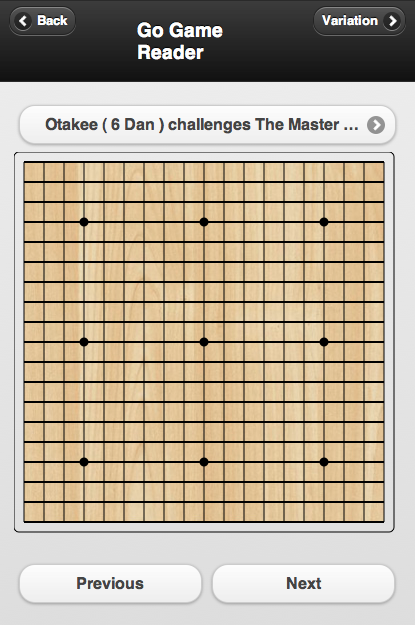There are a lot of enjoyable experiences in playing Go on a real board. There is the polished, wooden pine board. There's the feel of the stones and the small 'click' they make as they are played. The stones drawn in the previous posts were just flat disks that didn't recreate the image of a real go board. In order to make the stones a bit more evocative of a real Go board, let's add a highlight and shadowing to make them more three-dimensional.
One of the great things about the HTML5 Canvas element is its flexibility. If you can imagine an image, there must be a way to draw it. One perfect effect for creating a 3-D stone is the radial gradient effect that can create a realistic highlight for the stone.
To use a radial gradient with jCanvas you just create a gradient color and draw objects with it. It's kind of like creating a gradient color and adding it to your palette. So instead of drawing a stone with black or white, you draw it with your custom-made radial gradient color.
The radial gradient is built by assuming there are two circles of different colors and the gradient flows between them. The x1,y1 and x2,y2 are the center points of the two circles. The r1 and r2 values are the radii of the circles. C1 is the color of the first circle and c2 is the color that it gradually flows into.
After playing with the values for awhile, I placed the center points of the circles to the upper-left of the center point of the main circle. I started with a small radius of 2 for the smaller circle and made the second circle match the full radius.
// set the begin and end colors for black
var beginColor = "#4C4646";
var endColor = "#000000";
// figure out the color of the piece
if(theMove.charAt(1)== "W")
{
// begin and end colors for white
var beginColor = "#ffffff";
var endColor = "#DDDDDD";
}
// calculate the radius so it is half of the line spacing minus one pixel so stones aren't on top of each other
var theRadius = (this.lineSpacing / 2) - 1;
var radial = $("canvas").gradient({
x1: theConvertedValue.x-(theRadius/2), y1: theConvertedValue.y-(theRadius/2),
x2: theConvertedValue.x-(theRadius/2), y2: theConvertedValue.y-(theRadius/2),
r1: 2, r2: theRadius,
c1: beginColor,
c2: endColor
});
After looking at the white piece, it looked really plastic-like. So to change this, I added a shadow blur around the edge of the piece. This was accomplished by adding the following attributes when the stone was drawn:
shadowColor: "#000", shadowBlur: 2,
It looked better, but still not quite realistic. So finally I added just a subtle drop shadow on the lower-right side:
shadowX: 1, shadowY: 1,
So the final drawing routine was just:
// use jCanvas to draw the piece
$("canvas").drawArc({
fillStyle: radial,
shadowColor: "#000",
shadowBlur: 2,
shadowX: 1, shadowY: 1,
strokeWidth: 1,
x: theConvertedValue.x, y: theConvertedValue.y,
radius: theRadius
});
}
And so now the new stones look like this!:








